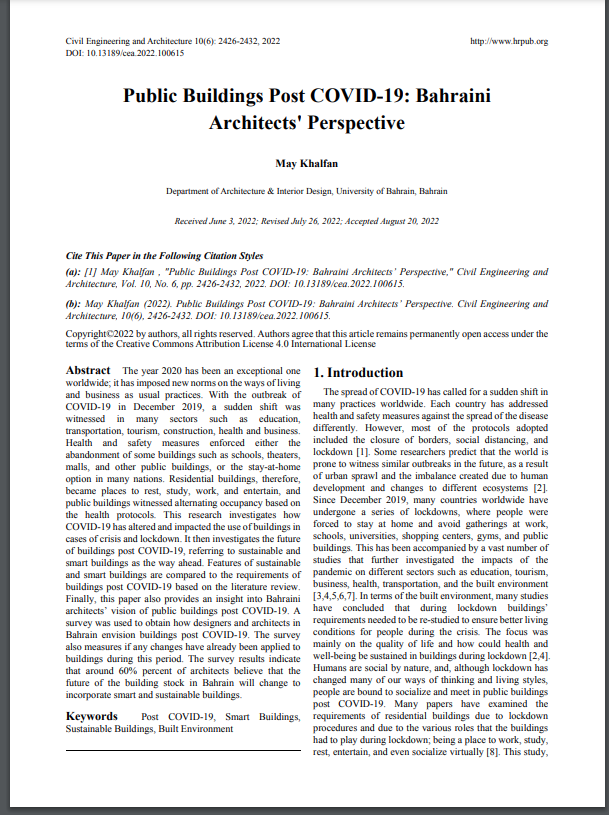وثيقة
Modelling the yield of 8.64 kW PV panels installed on a rooftop of a building in the Kingdom of Bahrain
وكيل مرتبط
Alnaser , W.E, مؤلف مشارك
عنوان الدورية
Smart and Sustainable Built Environment
دولة النشر
Kingdom of Bahrain
مكان النشر
sakhir, bahrain
الناشر
University of Bahrain
تاريخ النشر
2022
اللغة
الأنجليزية
الموضوع
الملخص الإنجليزي
Abstract :
Purpose – This paper allows more accurate estimation of the economy in investing in PV electrification for
buildings, especially for Gulf Cooperation Council Countries (GCCC) where they have nearly similar climate and building structure. The actual solar electricity yield from this building is used to make empirical modelling. Design/methodology/approach – The accurate automated daily-recorded solar electricity from 8.64 kW solar PV on a rooftop of Sadeem Building at Awali, Bahrain, was modelled to polynomial equations of order of 6. The effect of the tilt (β) and azimuth (Ψ) angle of PV panels for smart and sustainable buildings is studied. Findings – The correlation of each set of polynomial equation (R2 ) is listed and had reached a highest value of 0.9792 (for order of 6) with lowest value of 0.1853 (for order of 1). The model may be also applied to the GCCC. The results show that each kW of PV will have a solar electricity yield, on average, of 4.1 kWh. It also shows that the tilt angle has little influence on the solar electricity yield (less than 10%) when the tilt angle changed from 268 to 08 or from 268 to 508. The influence of the azimuth angle is found to be more than 50% in changing Ψ from 908 to 1808. Research limitations/implications – The model may not be restricted to Bahrain but applies – to a certain extent – to GCCC (six countries) and to other countries having buildings with similar roof design and at latitude close to the latitude of Bahrain. Practical implications – The model enables developers and investors to estimate, with high accuracy, the solar electricity provided from a building if PV panels are to be installed on its rooftop (or facade) at different tilt (β) and azimuth (Ψ) angle for smart and sustainable buildings. Social implications – Empirically finding out how much each kW of solar PV integrated to the building will produce solar energy electricity (in kWh), that is, 1 kW of PV yield, on average, 4.1 kWh. Originality/value – Establishing empirical models to evaluate the outcome of each installed kW of PV panels. Each 1 kW installation of PV panels is 4.0 kWh/day, on average. This is less than what commercial companies claim for this region, that is, 1 kW produces 5.5 kWh/ day – which affects the estimated economic outcome of PV projects.
المجموعة
مواد أخرى لنفس الموضوع
